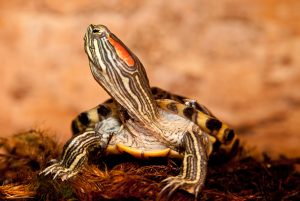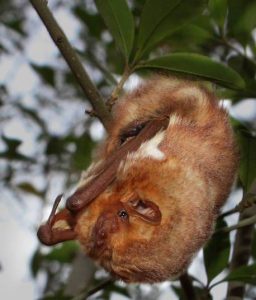How do animals survive the winter? Winters at River Legacy tend to be milder than in most places around the country because of our location. Still, there are periods when the temperature drops to well below freezing and, sometimes, lingers there for days. Snow and ice events are also expected at least a couple of times during the winter.
Birds have adaptations for surviving the winter that are unique to them. We will talk about them in an upcoming post! For now, we are going to be focused on mammals, reptiles, and amphibians. All of these groups go into a state of dormancy during which they stop growing, grind their physical activities to a halt, and their metabolism significantly slows down. But there are differences in how each group does it.
Hibernation refers to the process mammals go through whereas brumation applies to

reptiles and amphibians. During hibernation, mammals go into a full state of sleep. They slow their breathing and heart rate down to almost full stop and rely on fatty deposit for their energy during this time. They do not wake up from hibernation at all until spring arrives. How do they get their fatty deposits? By eating more and more in the fall. Bats are really the only group that lives at River Legacy that truly hibernate. Other River Legacy mammals such as bobcats, skunks, fox squirrels, coyotes, raccoons, and opossums do not hibernate and instead just seek shelter in someplace warm and do not come out very much OR are able to be fairly active while winter lasts.

Brumation, on the other hand, is the process by which reptiles and amphibians survive the winter. During brumation, these animals slow down as well but not to the point of almost stopping heart rate and breathing altogether. One key difference between brumation and hibernation is the fact that brumating animals are able to wake up from time to time in the middle of the winter. This is known as punctuated activity. Why do they need to wake up from time to time? Unlike mammals, which can survive the winter without water, reptiles and amphibians need it periodically. Another key difference is found in the method by which the animals obtain their energy. Mammals, as mentioned, rely on fatty deposits. Reptiles and amphibians instead use glycogen for their energy needs. Reptiles also can survive with very little oxygen during brumation because of this glycogen storage. Examples of River Legacy reptiles and amphibians that brumate include frogs, toads, snakes, and turtles.
If you would like to learn more about the winter adaptations of mammals and reptiles, we invite you to join our Winter Break Activities that are going to take place from December 26th through the 28th. For more information, please visit www.riverlegacy.org/calendar. We hope to see you there!
